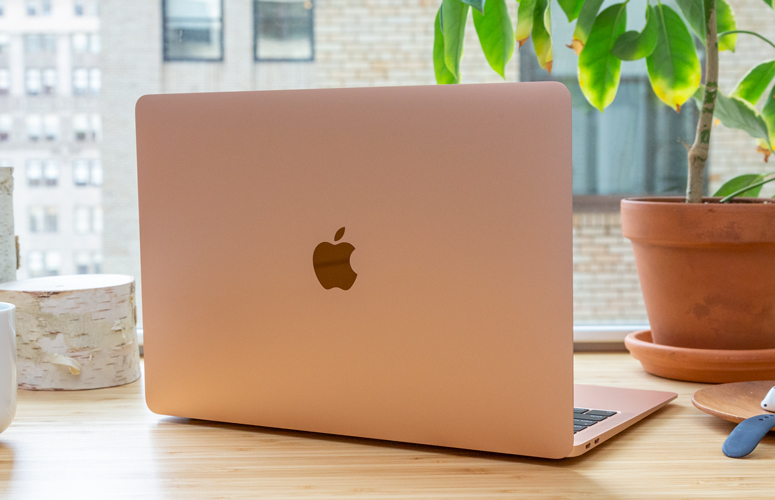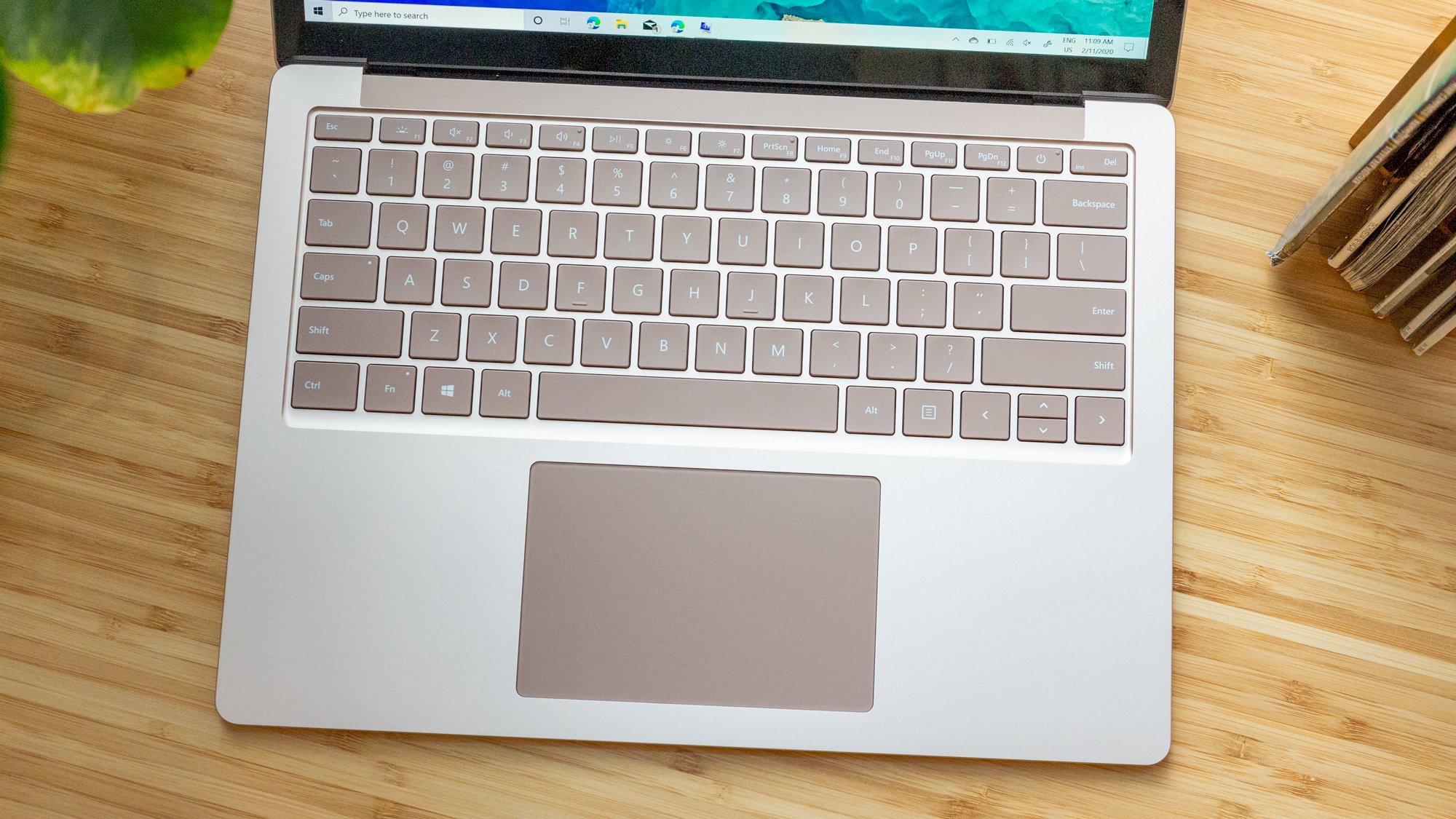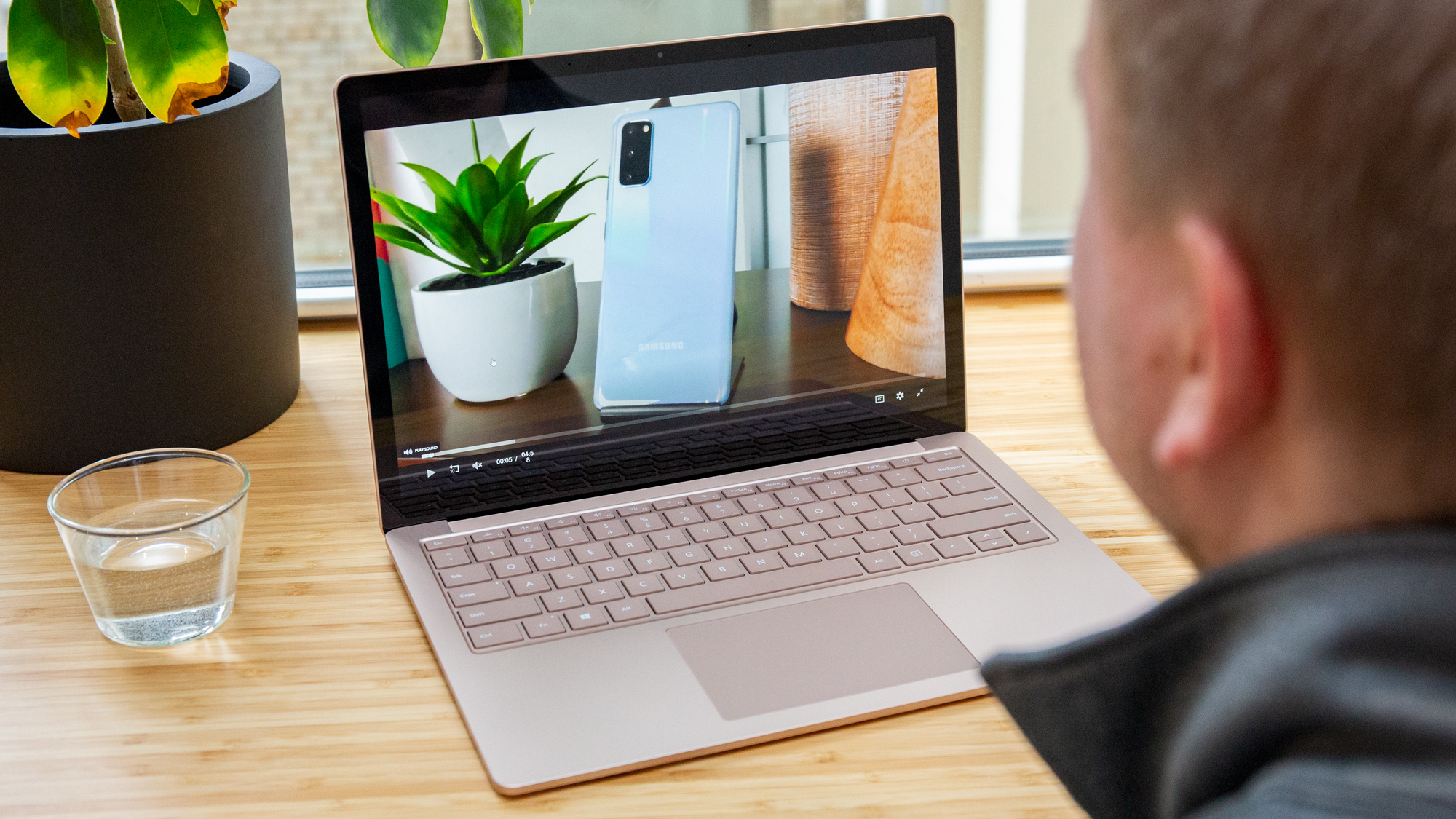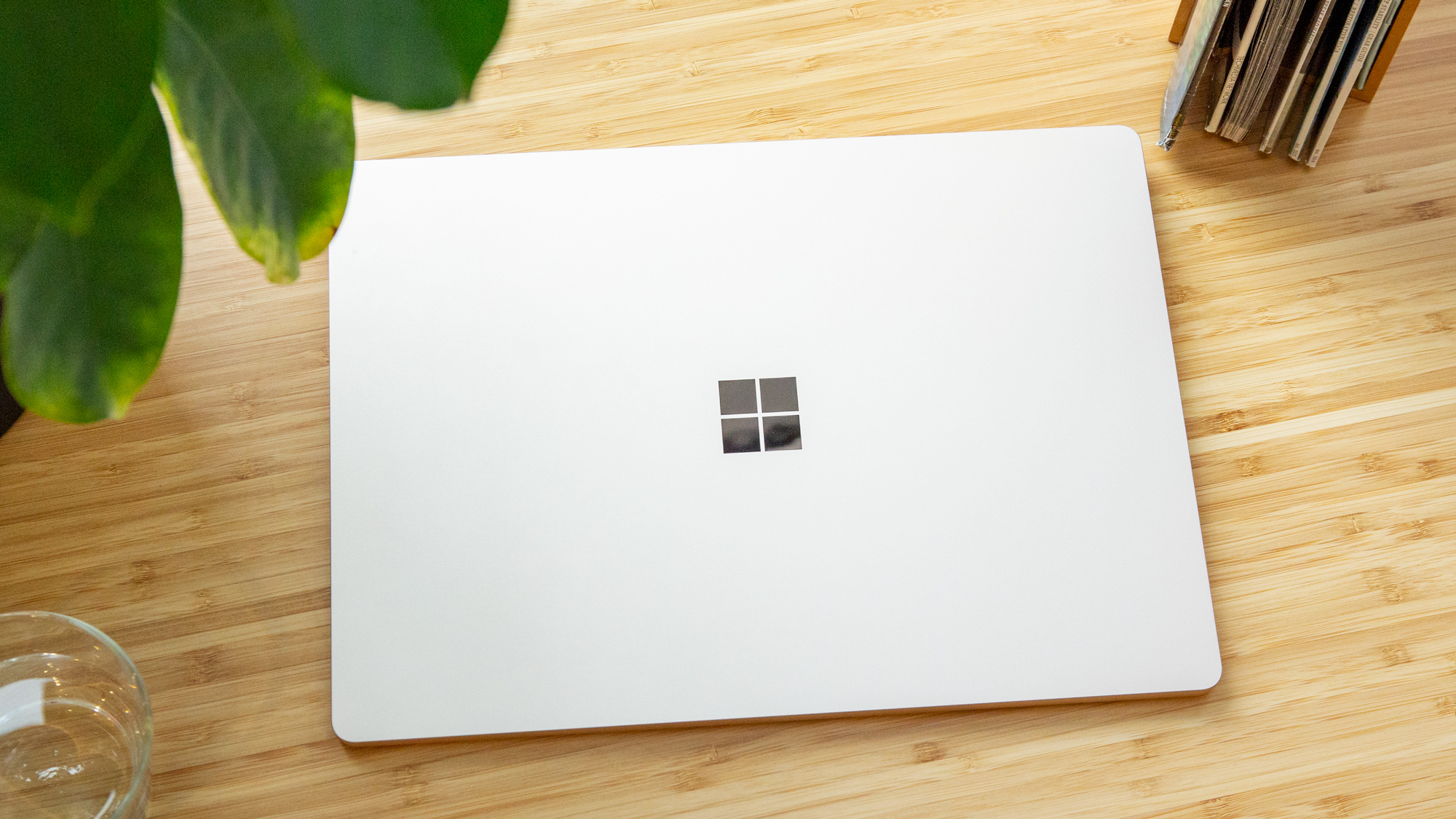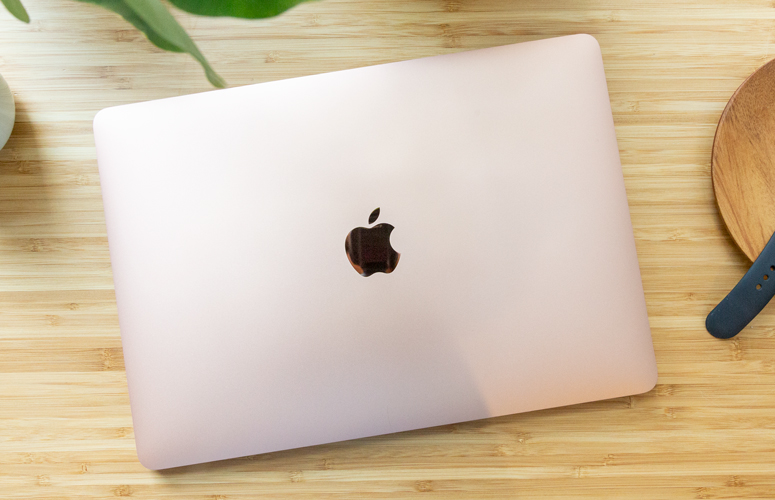Microsoft Surface Laptop 3 vs. Apple MacBook Air: Which laptop wins?
Battle of the portable flagships

Apple vs. Microsoft. It's a feud as old as modern computing itself. Initially fought on the software front, the battle of these two giants is now a clash of metal against metal. Microsoft's newest weapon is the Surface Laptop 3, a traditional clamshell laptop with a superslim chassis. With a 13.5-inch screen, the Surface Laptop 3 makes for the perfect opponent against the MacBook Air, Apple's massively popular portable laptop.
On paper, the Surface Laptop 3 already has advantages over the MacBook Air. The Surface's U-series CPU should offer faster performance, and its USB Type-A port is still super useful. On the flip side, the MacBook Air weighs less and has a smaller chassis.
But which of these two flagship laptops — the Surface Laptop 3 or MacBook Air — is right for you? This is how they stack up.
Microsoft Surface Laptop 3 (13 inches) vs. Apple MacBook Air: Specs compared
| Header Cell - Column 0 | Microsoft Surface Laptop 3 (13 inches) | Apple MacBook Air |
|---|---|---|
| Price | $1,399 | $1,099 |
| Display | 13.5 inches, 2256 x 1540 | 13.3 inches, 2560 x 1600 |
| CPU | Core i7-1065G7 | 8th Gen Y-series Core i5 |
| RAM | 16GB | 16GB |
| SSD | 256GB | 256GB |
| Ports | One USB 3.1, one USB Type-C, headphone jack, Surface Connect port | Two Thunderbolt 3, headphone |
| Colors | Sandstone | Gold |
| Size | 12.1 x 8.8 x 0.6 inches | 12 x 8.4 x 0.6 inches |
| Weight | 2.9 pounds | 2.8 pounds |
Design
These two laptops look very similar, but while the MacBook Air is slightly thinner, smaller and lighter, I prefer the aesthetics of the Surface Laptop 3.
The Surface Laptop 3 and MacBook Air have precision-cut metal chassis with a minimalist design. Iconic logos adorn their lids in reflective chrome, providing the only disruption from empty metal surfaces. Both laptops have gently rounded corners, while the Surface Laptop 3 has a sloped back side.

There are a few minor differences between the two designs. The MacBook Air sports front-firing speakers on each side of its keyboard, a fingerprint sensor built into the power button and slimmer display bezels than the Surface Laptop 3.
Our gold MacBook Air and sandstone Surface Laptop 3 look so similar that they'd be side by side on the same makeup palette. I prefer the pale pink of the Surface Laptop 3 over the more saturated copper color of the MacBook Air. Don't get me wrong, both shades are gorgeous. That being said, the Surface Laptop 3's matching keyboard is a better look than the black keyboard on the MacBook Air, which clashes with the copper deck.
Sign up to receive The Snapshot, a free special dispatch from Laptop Mag, in your inbox.
At 12 x 8.4 x 0.6 inches and 2.8 pounds, the MacBook Air is smaller and a tad lighter than the Surface Laptop 3, which comes in at 12.1 x 8.8 x 0.6 inches and 2.9 pounds.
This round goes to the MacBook Air for its more practical and portable design, as much as I prefer the aesthetics of the Surface Laptop 3.
Winner: MacBook Air
Ports
With only two Thunderbolt 3 ports and a headphone jack, the MacBook Air is begging you to connect a dongle.
If you're not about that life, go with the Surface Laptop 3, which offers a USB Type-C port, a USB 3.1 port, a headphone jack and the Surface Connect port.
Winner: Microsoft Surface Laptop 3 (13 inches)
Display
The Surface Laptop 3 has a 13.5-inch, 2256 x 1540 touch screen with a 3:2 aspect ratio, which is slightly taller than the 13.3-inch, 1080p display on the MacBook Air. These laptops have bright and vivid screens, but the Surface's touch screen panel gives it a slight edge.
One screen didn't look more vivid than the other when I watched a trailer for No Time to Die. Daniel Craig's piercing blue eyes looked a saturated tone of aqua blue, and the lipstick worn by Ana de Armas was a deep scarlet. Details were also very sharp; I could see every scar webbing its way across the antagonist's masked face. When I looked closely, the MacBook Air's panel seemed to have better contrasts because black and gray hues were darker.
According to our colorimeter, the Surface Laptop 3 covers 121% of the sRGB color gamut, which makes it more colorful than the MacBook Air's screen (100%).
The screens on these two laptops are equally bright. In fact, the Surface Laptop 3's panel, at 348 nits, was just a few nits brighter than the MacBook Air's screen (343 nits).
Winner: Surface Laptop 3
Keyboard and touchpad
This will be a closer contest once Apple does away with the Butterfly keyboard, but even then, the new scissor keyboard on the 16-inch MacBook Pro doesn't come close to the excellent one on the Surface Laptop 3.
My fingers felt instant relief when I stopped typing on the MacBook Air and switched to the Surface Laptop 3. It felt as if my fingers moved from typing on a wooden desk to a plush pillow. The keys on the MacBook are shallow, stiff and offer practically no feedback. Not to mention the notorious reliability issues with the keys. In contrast, the Surface Laptop 3's keys have a pleasant soft-touch coating and decent key travel. I bounced from one key to the next on the Surface Laptop 3 without experiencing any discomfort.
I typed at 113 words per minute with an accuracy of 98% on the 10FastFingers.com typing test when using the Surface Laptop 3. That is a bit slower but much more accurate than the 116 wpm at an accuracy of 91% I scored on the MacBook Air.
Apple still makes the best trackpads, and the 4.6 x 3.1-inch surface on the MacBook Air is no exception. The oversized pad tracked my movements and gestures effortlessly. I'm just not a fan of Force Touch, the fake haptic feedback that only simulates an actual click.
The 4.5 x 3-inch touchpad on the Surface Laptop 3 is also excellent, and its soft-touch coating matches the snug feeling of the laptop's keys. I had no problems using it to execute Windows 10 gestures, like pinch-to-zoom and three-finger swipe to switch windows.
Winner: Microsoft Surface Laptop 3 (13 inches)
Performance
Apple really crippled the performance of the MacBook Air when it chose to use a Y-series CPU instead of a U-series chip like the one in the Surface Laptop 3.
The gulf in performance was unmistakable on our benchmark tests. Equipped with a Core i7-1065G7 CPU and 16GB of RAM, the Surface Laptop 3 scored a 19,078 on the Geekbench 4.3 overall performance test. The 8th Gen Y-series CPU and 16GB of RAM in the MacBook Air landed at a lowly 7,880 on the same synthetic benchmark.
That poor performance from the MacBook has real-world consequences. The Air needed 36 minutes and 6 seconds to convert a 4K video to 1080p resolution using the Handbrake app. The Surface Laptop 3 took about two-thirds of that time, finishing the task in 24 minutes and 55 seconds.
To Apple's credit, the company equips its laptops with some seriously fast hard drives. The MacBook Air's 256GB SSD raced to 1,011 megabytes per second using the Blackmagic disk app. Microsoft is only now catching on; the 256GB M.2 PCIe SSD in the Surface Laptop 3 copied 4.97GB of multimedia files in 9.4 seconds, for a rate of 541.4 MBps.
Winner: Surface Laptop 3
Battery life
Expect good endurance from both of these laptops. The Surface Laptop 3 lasted for 9 hours and 17 minutes on our battery test, which involves continuous web surfing over Wi-Fi. It was a close call, but the MacBook Air powered down shortly before, after 8 hours and 51 minutes.
Winner: Surface Laptop 3
Value and configurations
These are expensive laptops, and both Apple and Microsoft charge an annoying premium for upgrading components.
The base Surface Laptop 3 (Platinum) costs $999 and packs a Core i5 CPU, 8GB of RAM and a 128GB SSD. For $1,299, you can get a 256GB SSD and expand your color options to include Sandstone, Cobalt Blue and Black.
We reviewed the $1,599 model with a Core i7-1065G7 CPU, 16GB of RAM and a 256GB SSD. Doubling storage to 512GB raises the price to $1,999. If you want a 1TB SSD, it'll cost you $2,399.
The base MacBook Air comes with a Core i5 CPU, 8GB of RAM and a 128GB SSD — specs that are similar to the lowest-priced Surface Laptop 3 — but the MacBook Air costs a bit more, at $1,099. You won't spend as much to upgrade storage, though. The 256GB model costs $1,299 — the same as the Surface Laptop 3 — and going from 8GB to 16GB of memory costs $200.
If you need more storage, you can buy a MacBook Air with a Core i5 CPU, 16GB of RAM and a 512GB SSD for $1,699, or a 1TB version for $1,899.
Winner: Draw
Overall winner: Microsoft Surface Laptop 3
This isn't even close. The Surface Laptop 3 is the better laptop, no question about it. While the MacBook Air is the more portable machine, the Surface Laptop 3 wins in every other way.
| Header Cell - Column 0 | Microsoft Surface Laptop 3 (13 inches) | Apple MacBook Air |
|---|---|---|
| Design (10) | 8 | 9 |
| Ports (10) | 6 | 4 |
| Display (15) | 12 | 11 |
| Keyboard/touchpad (15) | 13 | 9 |
| Performance (20) | 17 | 13 |
| Battery life (20) | 17 | 16 |
| Value (10) | 6 | 6 |
| Overall (100) | 79 | 68 |
It starts with the port selection: the Surface Laptop 3 has the very important USB 3.1 Type-A port, not just USB Type-C inputs. On top of that, the Surface Laptop 3 has a much more comfortable keyboard and significantly better performance than the MacBook Air, thanks to its U-series processor.
As the cheapest laptop running macOS, the MacBook Air is a popular choice among students and travelers. For those users, the laptop will do the trick. But if you're operating system agnostic, you'll prefer the Surface Laptop 3.
Phillip Tracy is the assistant managing editor at Laptop Mag where he reviews laptops, phones and other gadgets while covering the latest industry news. After graduating with a journalism degree from the University of Texas at Austin, Phillip became a tech reporter at the Daily Dot. There, he wrote reviews for a range of gadgets and covered everything from social media trends to cybersecurity. Prior to that, he wrote for RCR Wireless News covering 5G and IoT. When he's not tinkering with devices, you can find Phillip playing video games, reading, traveling or watching soccer.
